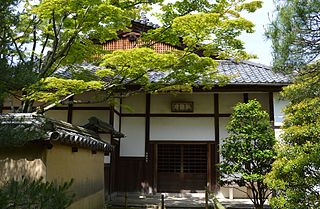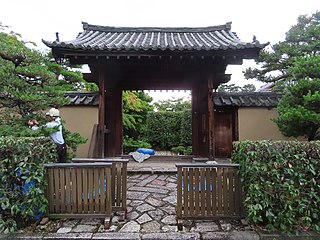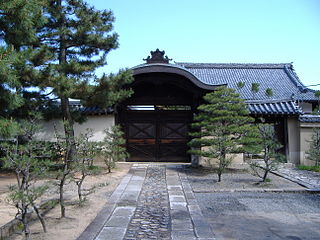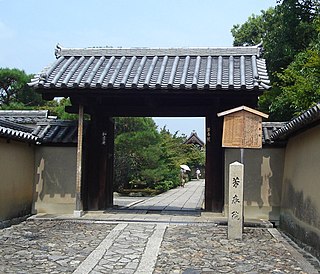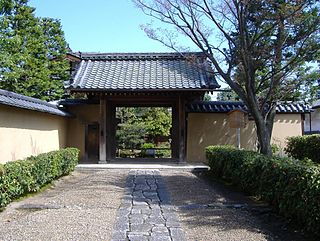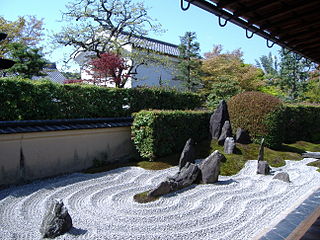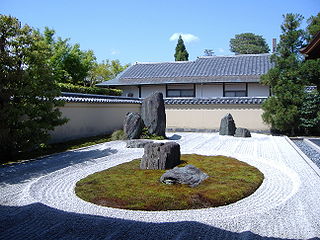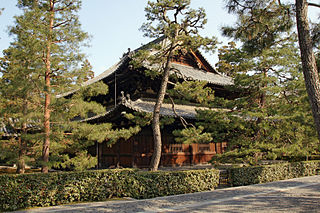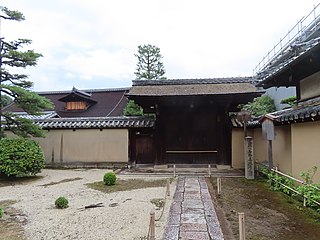Self-guided Sightseeing Tour #3 in Kyoto, Japan
Legend
Guided Free Walking Tours
Book free guided walking tours in Kyoto.
Guided Sightseeing Tours
Book guided sightseeing tours and activities in Kyoto.
Tour Facts
3 km
50 m
Experience Kyoto in Japan in a whole new way with our free self-guided sightseeing tour. This site not only offers you practical information and insider tips, but also a rich variety of activities and sights you shouldn't miss. Whether you love art and culture, want to explore historical sites or simply want to experience the vibrant atmosphere of a lively city - you'll find everything you need for your personal adventure here.
Activities in KyotoIndividual Sights in KyotoSight 1: Koho-an temple
Kohōan is a Rinzai Zen temple located in the Kurama area of Kyoto City, Kyoto Prefecture. It is a sub-temple of the Daitoku-ji, the head temple of the Daitoku-ji branch of Rinzai Zen. It is situated at the western edge of the Daitoku-ji precincts, away from the other sub-temples. The name "Kohō" means "a single thatched boat" and was given to it by Shun'ya Sōen, whom Kobori Masakazu (Enshū) studied under. Although it is not open to the public, there are special openings for about ten days every few years.
Sight 2: Daiko-in temple
Daikoin is a Rinzai sect temple located in Daidokujicho, Kuramae, Kyoto City. It is a sub-temple of the main temple Daitokuji. The principal image is Shakyamuni Buddha.
Sight 3: Ryuko-in temple
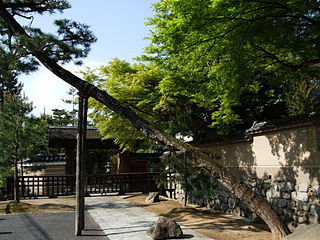
Ryōkoin is a temple of the Rinzai sect located in Murasakino, Kita-ku, Kyoto, Japan. It is the head of the Rinzai sect Daitokuji sect Daihonzan Daitokuji Temple. Although it has many buildings and works of art that are national treasures and important cultural properties, it is a temple that is closed to the public, does not accept any visits for sightseeing purposes, and does not hold any special exhibitions.
Sight 4: Gyokurin-in temple
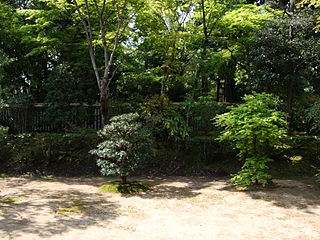
Gyokurin-in is a temple of the Rinzai sect located in Murasakino, Kita-ku, Kyoto, Japan. It is the head of the Rinzai sect Daihonzan Daitokuji Temple. It is not usually open to the public.
Sight 5: Koto-in temple
Kōtō-in (高桐院) is a sub-temple of Daitoku-ji, Kyoto, Japan. It was founded by Hosokawa Tadaoki. There is a teahouse, the Shōkō-ken, and the gardens are celebrated for their momiji. A pair of Southern Song monochrome hanging scrolls with landscape have been designated a National Treasure. Many other works are aired annually in October.
Sight 6: Soken-in temple
Sōken-in (総見院) is a sub-temple of Daitoku-ji, Kyoto, Japan. It was founded by Toyotomi Hideyoshi in 1582 as the mortuary temple of Oda Nobunaga. Hideyoshi granted the temple three hundred koku and staged his celebrated Daitoku-ji tea gathering on its grounds in 1585. During the early years of the Meiji period its precinct was demolished and its treasures relocated; Sōken-in was revived in 1926. The seated wooden statue of Oda Nobunaga of 1583, lacquered, with inlaid eyes and an inscription on the base, an Important Cultural Property, was returned in 1961. Nobunaga's funeral and Hideyoshi's foundation of the sub-temple 'with the very best wood available, a remarkable thing to see' was recounted by the Portuguese missionary Luís Fróis in his contemporary História de Japam.
Sight 7: Daisen-in temple
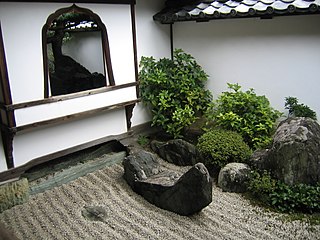
The Daisen-in (大仙院) is a sub-temple of Daitoku-ji, a temple of the Rinzai school of Zen in Buddhism, one of the five most important Zen temples of Kyoto. The name means "The Academy of the Great Immortals." Daisen-in was founded by the Zen priest Kogaku Sōkō , and was built between 1509 and 1513. The Daisen-in is noted for its screen paintings and for its kare-sansui, or dry landscape garden.
Sight 8: Hoshun-in temple
Hoshun-in is a temple of the Rinzai sect, Daitoku-ji branch, located in the Kurama area of Kyoto City, Kyoto Prefecture. It is one of the sub-temples of the main temple Daitoku-ji and is situated the furthest north among the sub-temples of Daitoku-ji. It is usually not open to the public.
Sight 9: Juko-in temple
Jukō-in (聚光院) is a sub-temple of Daitoku-ji, Kyoto, Japan. It was founded in 1566 as the mortuary temple of Miyoshi Nagayoshi. In 1589 Sen no Rikyū designated it as the mortuary temple for his family. The Hondō (1583) and chashitsu (1739) are Important Cultural Properties and the gardens have been designated a Place of Scenic Beauty. A painting of Miyoshi Nagayoshi (1566) has also been designated an Important Cultural Property. The temple also contains a great number of fusuma paintings done by Kanō Eitoku.
Sight 10: Kohrin-in temple
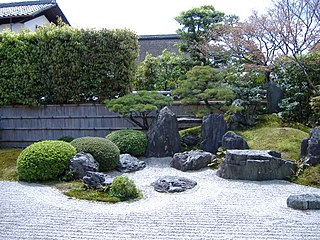
Korin-in is a temple of the Rinzai sect located in Daidokutokuji-cho, Kuramae, Kita-ku, Kyoto. It is a sub-temple of the main temple Daitoku-ji. The principal image is Shakyamuni Buddha. It is not open to the public except on special viewing days.
Sight 11: Zuihō-in temple
Zuihoin is a temple of the Daitokuji sect of the Rinzai sect located in Murasakino Daitokuji-cho, Kita-ku, Kyoto. The head of the tower of Daitokuji Temple. The name of the mountain is Longpao Mountain. The main Buddha is Guanyin Bodhisattva. There is a grave of Mr. and Mrs. Otomo Yoshizhen in the temple grounds.
Sight 12: Ryugen-in temple
Ryōgen-in (龍源院) is a subtemple of the Daitoku-ji Buddhist complex, located in Kita-ku, Kyoto, Japan. It was constructed in 1502.
Sight 13: Obai-ji temple
Ōbai-in (黄梅院) is an autonomous sub-temple of Daitoku-ji, Kyoto, Japan, the headquarters of the Daitoku-ji school of the Rinzai sect of Zen Buddhism. The Hondō (1586) and Kuri (1589) have been designated Important Cultural Properties. Momoyama period monochrome fusuma paintings of Seven hermits in a bamboo grove, Landscape with figures, and Geese, by Unkoku Tōgan (1588), have also been designated Important Cultural Properties. The severed head of the statue of Sen no Rikyū, its position fatally regarded as hubristic by Toyotomi Hideyoshi, was once kept at Obai-in.
Sight 14: Daitoku-ji
Get Ticket*Daitoku-ji is a Buddhist temple, one of fourteen autonomous branches of the Rinzai school of Japanese Zen. It is located in Kita-ku, Kyoto, Japan. The "mountain name" (sangō) by which it is known is Ryūhōzan (龍宝山). The Daitoku-ji temple complex today covers more than 23 hectares.
Sight 15: Shinju-an temple
Shinjuan is the head of the Rinzai sect Daihonzan Daitokuji Temple in Murasakino, Kita-ku, Kyoto, Japan. It is a temple related to Ikkyu Sojun, who is famous as an unconventional Zen monk. It is usually closed to the public, except during special public occasions.
Share
How likely are you to recommend us?
Disclaimer Please be aware of your surroundings and do not enter private property. We are not liable for any damages that occur during the tours.
GPX-Download For navigation apps and GPS devices you can download the tour as a GPX file.
